Cistanthe ambigua, Desert Pussypaws
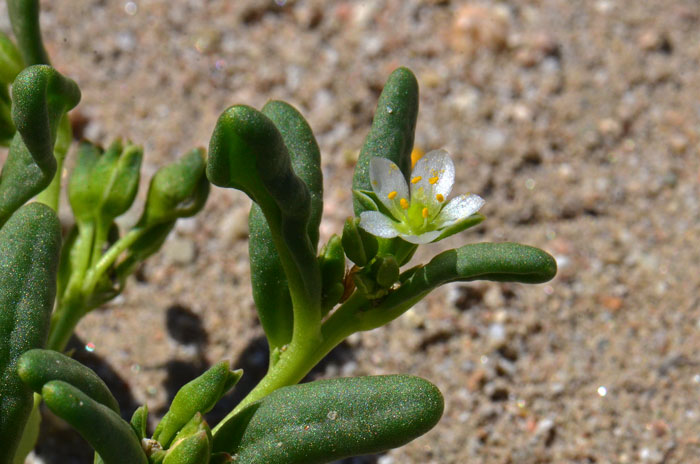
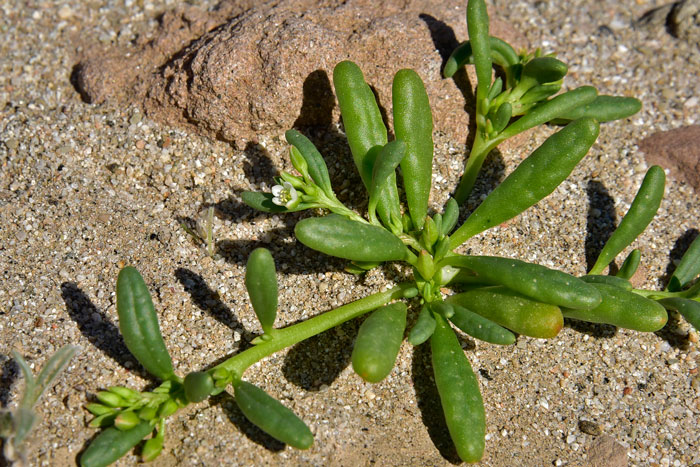
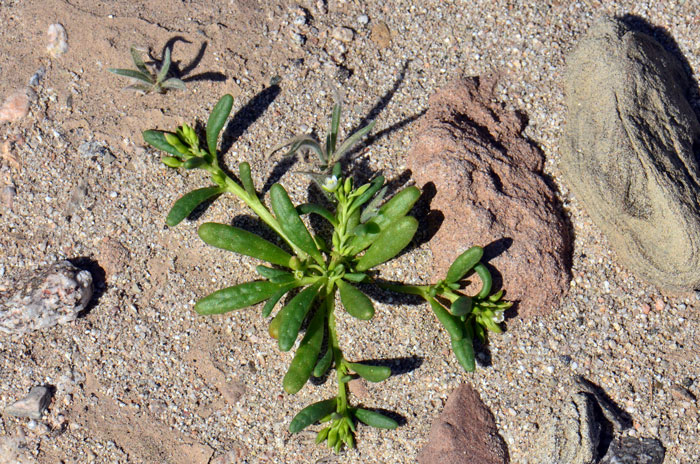
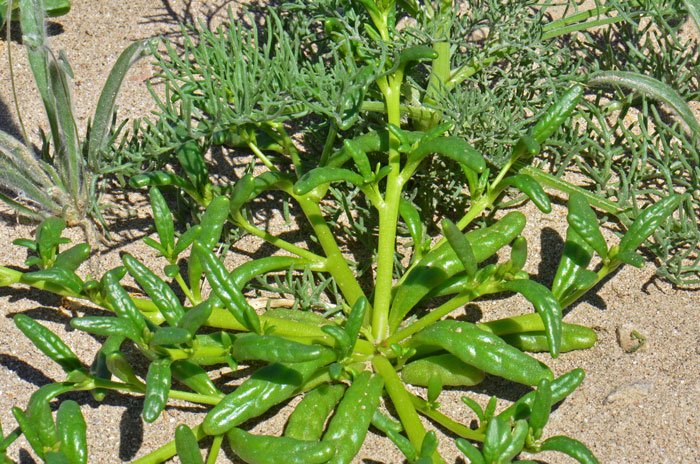
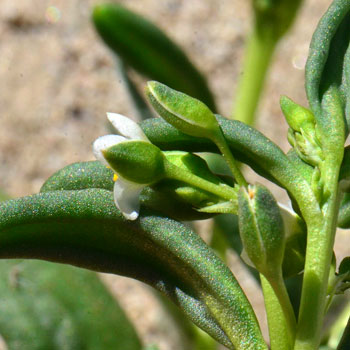
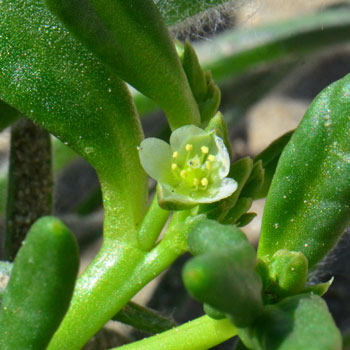
Scientific Name: Cistanthe ambigua
Common Name: Desert Pussypaws
Also Called: Dead-man's Fingers, Desert Pot-herb
Family: Portulacaceae, Purslane Family
The genus Cistanthe is moving to the [1] Montiaceae Family.
Synonyms: (Calandrinia ambigua )
Status: Native
Duration: Annual
Size: Up to 7 inches more or less.
Growth Form: Forb/herb; roots fleshy; stems spreading to erect; glabrous.
Leaves: Green; bright green; fleshy, leaves cauline and do not for a basal rosette, leaves variable from linear to spoon-shaped (spathulate), terete, not glaucous.
Flower Color: White; flowering stem is like a compound raceme (paniculate), flowers on short pedicels in umbel-like clusters, flowers usually do not extend the length of the leaves; sepals ovate only slightly unequal, fruit an ovoid capsule, seeds are small and black.
Flowering Season: February to March in Arizona; California January to April or November to February.
Elevation: Up to 1,500 feet or more (2,500 feet).
Habitat Preferences: Sandy washes and slopes, silty soils, desert shrub communities.
Recorded Range: Cistanthe ambigua is very rare in the United States where it is found only in southeast California and in extreme southwest Arizona in Yuma county. This species is also in northwest Mexico.
North America & US County Distribution Map for Cistanthe ambigua.
U.S. Weed Information: No information available.
Invasive/Noxious Weed Information: No information available.
Wetland Indicator: In North America Cistanthe ambigua has the following wetland designations:
Arid West, FAC; Western Mountains, Valleys, and Coast, FAC.
FAC = Facultative, occur in wetlands and non-wetlands.
Threatened/Endangered Information: No information available.
In Arizona there are 3 species of Cistanthe, in California there are 10 species, Nevada has 5 species, New Mexico has 1 species, Texas has 0 species, and Utah has 4 species. All data is approximate and subject to taxonomic changes.
The genus Cistanthe is moving to the [1] Montiaceae Family.
Comments: Desert Pussypaws is mostly a Mojave Desert Species preferring hot sandy, gravelly areas and desert shrub communities. The plants in the photo above were taken March 08, 2016 off of SR 195, Box Canyon Road, east of Mecca, Riverside, California.

